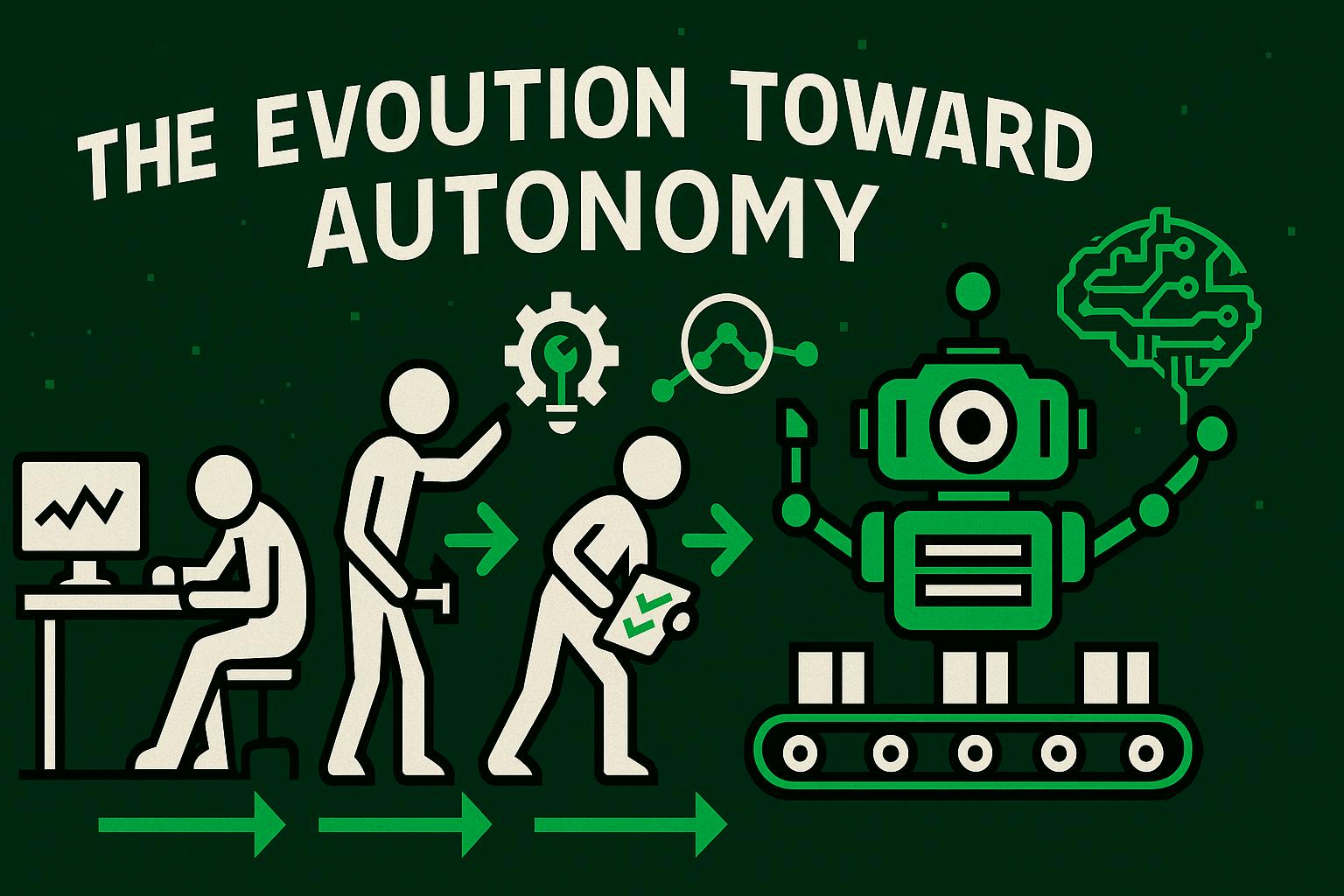I began researching organizational autonomy long before modern AI brought the idea into mainstream conversation. My interest started when I was ten years old and learning to program. Even then I believed that many forms of work could eventually run without constant human intervention if the underlying systems were designed correctly. I did not have the vocabulary for it at the time, but I already understood that automation would not be enough. Something deeper would be required. Organizations would need the ability to see, understand, and act without relying entirely on human oversight.
Years later, when I entered the business world, this intuition became a clear problem. Every company I worked with struggled with the same issue. Work required constant checking, reminding, coordinating, supervising, and recovering. Decisions were slowed because information lived in separate tools. Managers spent their time trying to understand what was happening instead of guiding the next step. The burden of awareness consumed the entire system.
It became obvious that the real bottleneck was not talent or strategy. It was structure. The modern workplace depended entirely on human awareness to move work forward. If a person stopped watching, the system paused. If they stopped pushing, the system stalled. This dependence on human attention was the opposite of autonomy. It also prevented businesses, especially smaller ones, from scaling with clarity and control.
I decided to study the problem directly. That led me to spend more than twenty five years building companies, designing systems, and using each environment as a live research laboratory. I wanted to understand the full path from traditional management to true organizational autonomy. I built hundreds of components, dozens of internal tools, commercial products, and eventually full platforms through my agency, Prospus. Every project gave me more insight into what autonomy required and what prevented it.
This research eventually came together in a structured model. I called it the Ragsdale Framework for Autonomous Organizations. Today I refer to it as the “5A Framework”. It describes five distinct stages that every organization must progress through to reach autonomy. These stages capture the logic, structure, and progression that I observed while building systems that support real world work.
The five stages are:
- Aspiration is the starting point. It is the moment when an organization becomes conscious of a desire for greater clarity, control, and scalability. Most companies operate for many years without this realization. Nothing changes until leaders become aware that the way work moves is not sustainable and that constant supervision is a structural barrier.
- Awareness is the next stage. Once an organization recognizes the need for change, it must learn to see itself. This means gaining real time visibility into tasks, communication, time, outcomes, and accountability. Without a unified view of work, no system can advance. Awareness allows an organization to understand where energy is wasted and where progress is blocked.
- Alignment follows naturally. Once the organization can see clearly, it can begin to align its goals, assignments, communication, and execution. Alignment replaces constant correction with structural clarity. It reduces friction and allows the organization to operate with far fewer management interventions.
- Acceleration emerges once clarity, structure, and alignment are in place. At this point the organization can begin to operate with support from artificial intelligence. AI systems can take on supervisory responsibilities, distribute information, monitor execution, surface issues, and support decision making. This shift increases speed and reduces the pressure placed on human managers.
- Autonomization is the final stage. It is the point where the organization can operate with significant independence. Work moves fluidly. Systems correct themselves. Intelligence is embedded in workflows. Human attention is used where it adds the most value, and the structure carries the rest.
While I developed the 5A Framework through research, I built the first real implementation through my platform, Kaamfu. It is the first Autonomous Operating Environment, designed to unify tools, teams, and AI into one place. It provides the visibility, structure, and intelligence that the framework requires. I built it inside my own companies first so that the theories could be tested in real conditions where deadlines, complexity, and human behavior collide.
What makes this work unique is that it connects theory, engineering, and operating experience. I did not research autonomy from a distance. I built the environments where these ideas could be tested. I designed the software, hired the teams, and ran the organizations through the levels of the framework. By living inside these systems while building them, I was able to validate the entire model end to end.
The 5A Framework is the result of decades of this work. It provides a clear path that any organization can follow to reduce its dependency on human supervision and evolve toward autonomy. It also gives small and mid sized businesses a way to compete in a world where large enterprises have the advantage of scale, dedicated AI teams, and complex infrastructure. Autonomy is no longer reserved for the few who can afford it. It becomes accessible when the principles are understood and the right environment is in place.
This is why I started researching autonomy and why I continue to refine the path. The future of work belongs to organizations that can see clearly, act intelligently, and operate with far less friction. The 5A Framework describes how to get there, and Kaamfu is the environment where it becomes real.










